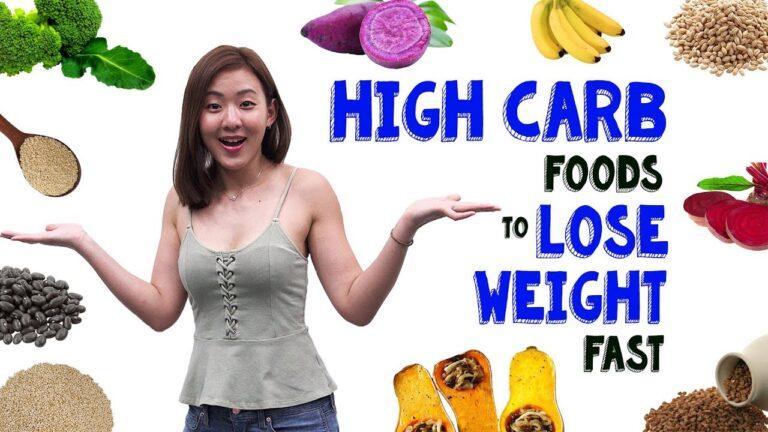Summer is a time for farmer’s markets, supermarkets teeming with warm-weather produce—and sticker shock at the high prices for organic offerings. This begs the question whether organic fruits and vegetables are richer in nutrients than their conventional cousins. The short answer is yes—but the long answer is more complex than one might expect.
Though it might seem counterintuitive, regulations for organic food put out by the U.S. Department of Agriculture don’t focus on the health benefits for the person savoring those peppers and peaches. Instead, the emphasis is on how organic produce is grown, largely by protecting soil through the use of composts and animal manures and eschewing synthetic chemicals (although if invading insects can’t be controlled naturally, pesticides may be allowed).
Yet a key motivator for consumers is the notion that they are healthier to eat, so it’s important for scientists to understand whether this is true, says Julia Baudry, who has studied the question at the independent National Research Institute for Agriculture, Food, and Environment in France.
Decades of research have muddied the answer. Some, especially earlier studies, found little nutritional difference between organic and conventional foods. Others declared the upside to be vast. This disparity likely reflects variations in growing practices at organic farms and, importantly, how nutrition is defined, says David Montgomery, a soil scientist at the University of Washington. “There are differences with what they are actually measuring and comparing,” he says.
Overall, after conducting an analysis for a scientific journal and for his book What Your Food Ate—and yes, plants dine too, he says—Montgomery determined that crops grown organically and in healthy soil have less pesticide residues and higher amounts of antioxidant-rich phytochemicals such as flavonoids and carotenoids.
“One could argue whether the differences are enough to be worried about, but from my perspective, the best level of pesticides in my food is none and best level of phytochemicals is more,” he says.
Of course, eating any fruit and vegetable is beneficial. Consuming large amounts of produce has been linked to everything from heart health to a reduced cancer risk. The average American gets just 10 percent of the recommended daily amounts for vegetables and 12 percent for fruit.
Lower cancer and other disease rates
Certified organic produce has been readily available only for around two decades, says Dave Chapman, a longtime organic farmer in Vermont. Annual sales of all organic food products (produce, milk, and more) have now reached $52 billion, nearly double the rate of a decade ago but still just six percent of the U.S. food market. Overall, organic foods cost about 20 percent more than their conventional counterparts, in part because it is more costly to produce.
The initial studies sparking confusion about a health dividend limited their analyses to vitamins, minerals, and macronutrients (such as carbohydrates and protein). This was done because the government has set recommended daily amounts for these, Montgomery says.
A 2012 review of 200 prior studies confirmed that levels of vitamins like A and C and minerals, including calcium and iron, were not meaningfully different between organic and conventional fare.
Less of a concern in those studies were phytochemicals, the compounds abundant in produce that reduce inflammation, strengthen the immune system, and otherwise promote health, since they don’t have a recommended dietary allowance.
When researchers focused specifically on these compounds, they found organic produce is 12 percent richer in them, including having higher levels of carotenoids. And people fed three weeks of conventional food and then three weeks of organics had higher levels of flavonoids in their urine following the organic meals.
This makes sense, Montgomery says, because plants ramp up levels of these compounds to protect themselves from insects and disease. Conventionally grown crops don’t need to do this because they are guarded by the synthetic chemicals.
Extra phytochemicals may be one reason Baudry’s observational studies have found the lowest rates of breast and other cancers and type 2 diabetes in people who eat the most organic foods. Some scientists fault observational research because people who regularly eat organic differ in so many ways from those who don’t. They are generally wealthier and more highly educated, for example, and they tend to boost their health by exercising regularly.
Baudry says she and her colleagues were careful to take all this into account. “We are quite confident we are controlling for right range of factors in this research,” she says. Still, such studies can’t prove causation. As the researchers state in their summary, to be able to say that eating organic leads to lower rates of disease, direct experiments would need to be conducted.
The better health of people in Baudry’s research likely also results from what organic produce largely does not contain: synthetic fertilizers and pesticides. The 2012 review found pesticide residue on conventional produce to be 30 percent higher than on organics, while other researchers measured 48 percent more of the metal cadmium—a toxin found in some fertilizers that can accumulate in people’s liver and kidneys.
Most studies on risks from these chemicals have been done on farmworkers, as they have vastly more exposure. One 2022 report documented health problems ranging from poor concentration and neurological symptoms to chest pain in farmers using organophosphate chemicals. In fact, the World Health Organization calls some of these insecticides probable carcinogens. Still, chemical levels on conventionally grown crops generally fall below legal safety thresholds.
Going beyond organics with regenerative agriculture
For the healthiest food, people should look beyond whether something is labeled as organic and learn how the food was grown, says Tim LaSalle, cofounder of the Center for Regenerative Agriculture and Resilient Systems at California State University, Chico.
Remember that the law and regulations regarding organic foods focus on soil quality. Chapman, a co-executive director of the Real Organic Project, likens the diversity of microorganisms in healthy soil to the range found in our intestines. “If our microbiome is not healthy, we’re not healthy,” he says. “The same is true for soil.”
That’s why Chapman faults the USDA for allowing plants grown hydroponically—that is, without any soil—to be labeled as organic. Hydroponic plants are fed artificially, typically with nitrogen. “The plants are hanging in the air and the nutrition basically comes from an IV tube,” he says. “This is nobody’s idea of grandpa’s garden.” Chapman laments the large number of major food companies whose organic produce is grown this way.
Consumers wanting crops grown in the best soil should look for those from regenerative agriculture, LaSalle says, whether they are certified organic or not. This movement emphasizes soil quality and, while it does not require abstaining from pesticides and herbicides, such an ecosystem typically reduces the need for them, he says.
Farmers practicing regenerative farming follow three basic principles: they don’t turn over, or till, the land before planting because that kills organisms living near the surface; they employ several species of cover crops between growing seasons because their roots feed the soil with varying compounds; and they keep plants in the ground as many days of the year as possible, rather than letting it lie fallow between crops.
These strategies increase the network of fungi and the numbers of earthworms and other organisms below the surface that bring additional nutrients to the plants. A field of broccoli and cauliflower cultivated in soil improved in this way would lead to a ten-fold increase in phytochemical levels in these vegetables, according to an article in the European Journal of Nutrition.
The term regenerative is not regulated, however, so people can (and do) put that label on foods that don’t qualify, Chapman laments. (Organic is a legal term, although Chapman says enforcement is lax, especially on imported grains.)
To find the healthiest—and tastiest—produce this summer, then, LaSalle advises going to your local farmer’s market. While there, ask the farmers not only whether they avoid pesticides but also whether they till their land and what they do with it between growing seasons.
But Britt Burton-Freeman, director of the Illinois Institute of Technology’s Center for Nutrition Research, worries the focus on organics may be keeping people from eating enough fruits and vegetables. In her survey of 510 low-income shoppers—most of whom said they preferred organic but couldn’t afford it—talk of pesticides made some less likely to want to buy produce at all. “Food marketers need to have a clearer understanding of how their messages may influence produce consumption,” she says.
People who can afford well-grown organic foods need to decide for themselves whether they are worth the extra money, Montgomery says. “But if you want to eat the healthiest that you can, you would prioritize a diet rich in whole, fresh foods grown on healthy, fertile soils.”
This content was originally published here.



















